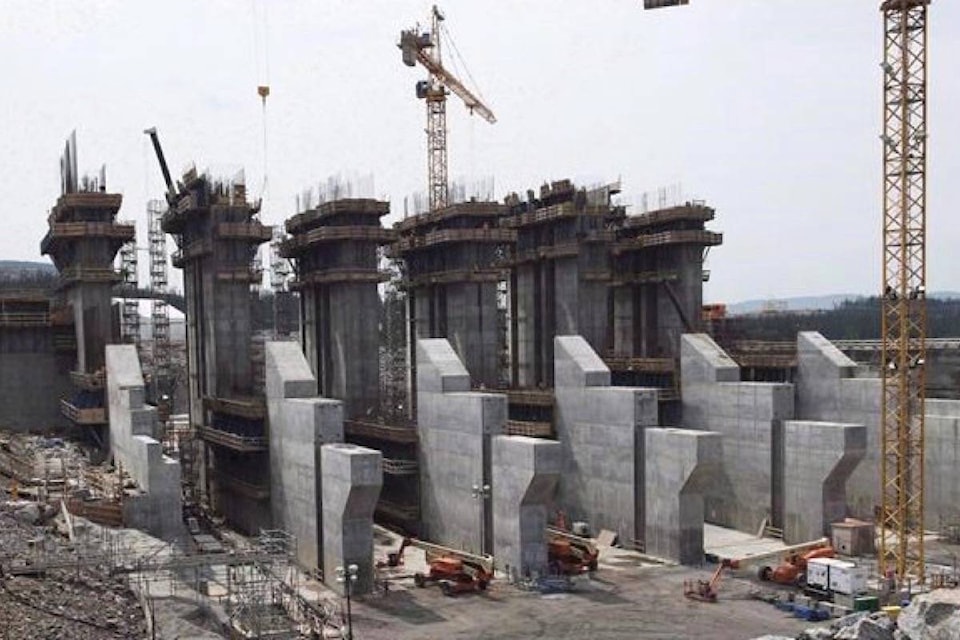A hydroelectric venture in central Labrador should serve as a cautionary tale for B.C. and its own ambitions to build a multibillion-dollar dam in the province’s northeast, the former head of Newfoundland and Labrador’s public utilities regulator says.
David Vardy, a former economics professor and retired civil servant in that province, published a letter Tuesday addressed to the B.C. Utilities Commission containing more than a dozen recommendations based on lessons learned from Muskrat Falls.
READ MORE: Protestors stand for Site C during Clark’s visit
READ MORE: Supreme Court dismisses two Site C lawsuits from B.C. First Nations
The utilities regulator was tasked earlier this month by B.C.’s new NDP government to review the economic viability of Site C, an $8.8-billion energy project under construction on the Peace River.
“B.C. has the luxury of being able to stop this now without going any further,” Vardy said in an interview. “In terms of the take-away from Muskrat Falls: It’s not too late to stop it.”
Vardy’s letter outlined the similarities between the two provinces’ megaprojects: Both are backed by powerful Crown corporations, both were exempt from the usual regulatory oversight process, at least initially, and both have experienced ballooning costs over time.
The price tag for Muskrat Falls has more than doubled from original estimates, swelling to $12.7 billion in the province of only about 525,000 people. Vardy said the project’s cost of about $24,000 per person would double the province’s per capita net debt and pose a major threat to its solvency.
Vardy encouraged B.C.’s Utilities Commission to ensure Site C is built according to current energy needs and is made as adaptable as possible, warning that the rapid pace of technological advances could make the project obsolete before long.
He also emphasized the importance of independent public oversight and a rigorous public review process, lauding the analysis being conducted by the utilities commission.
The review began Aug. 9, with interim findings due six weeks later and a final report expected by Nov. 1.
The commission’s review process in B.C. was once standard before the previous Liberal government’s clean-energy laws permitted some projects, including Site C, to circumvent the regulatory process.
An email from B.C.’s Energy Ministry said the government would consider the results of the report, as well as environmental and First Nations considerations, before making a timely decision on the future of Site C.
Energy Minister Michelle Mungall declined further comment “out of respect for the independence of the review process.”
BC Hydro could not immediately be reached for comment.
The Independent Contractors and Businesses Association told the utilities commission in a statement released Tuesday that BC Hydro must complete Site C.
“The Site C dam has been the subject of a robust, nearly three year, independent review and its business case is solid,” president Chris Gardner said. “We cannot produce this kind of high quality, reasonably priced, clean energy anywhere.”
NEWS RELEASE: ICBA makes the case for #SiteC to the BC Utilities Commission. #bcpoli https://t.co/GjoWV4FlG1 pic.twitter.com/gmOaIBhkM7
— ICBA | #Get2Yes (@icbabc) August 29, 2017
There are about 2,400 people working on Site C.
Gardner described Site C as an “all-important backbone” that would allow B.C. to transition to other renewable energy sources, adding that ratepayers cannot be expected to spend billions of dollars and get nothing in return.
But Vardy dismissed the logic of chasing money already spent, which he called sunk costs.
“The key consideration must be future costs,” he said.
“We may find it very difficult to walk away from an investment … but what really counts is how much money you’re going to have to spend before you get something that’s worth anything.”
Geordon Omand, The Canadian Press



